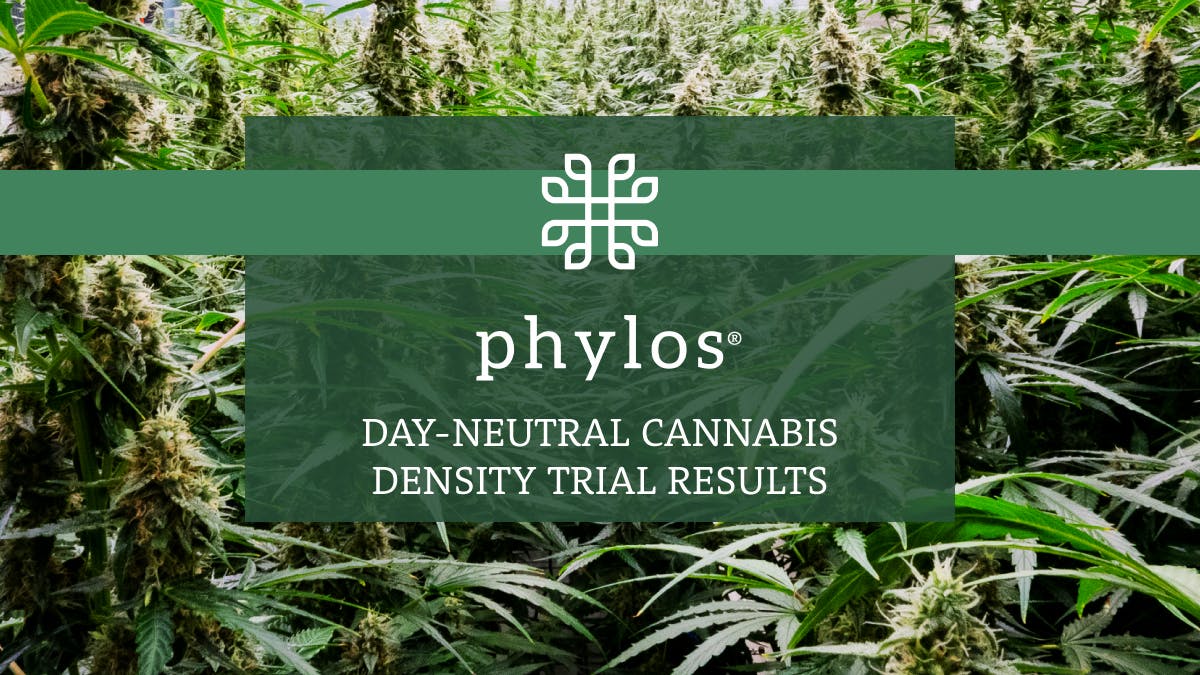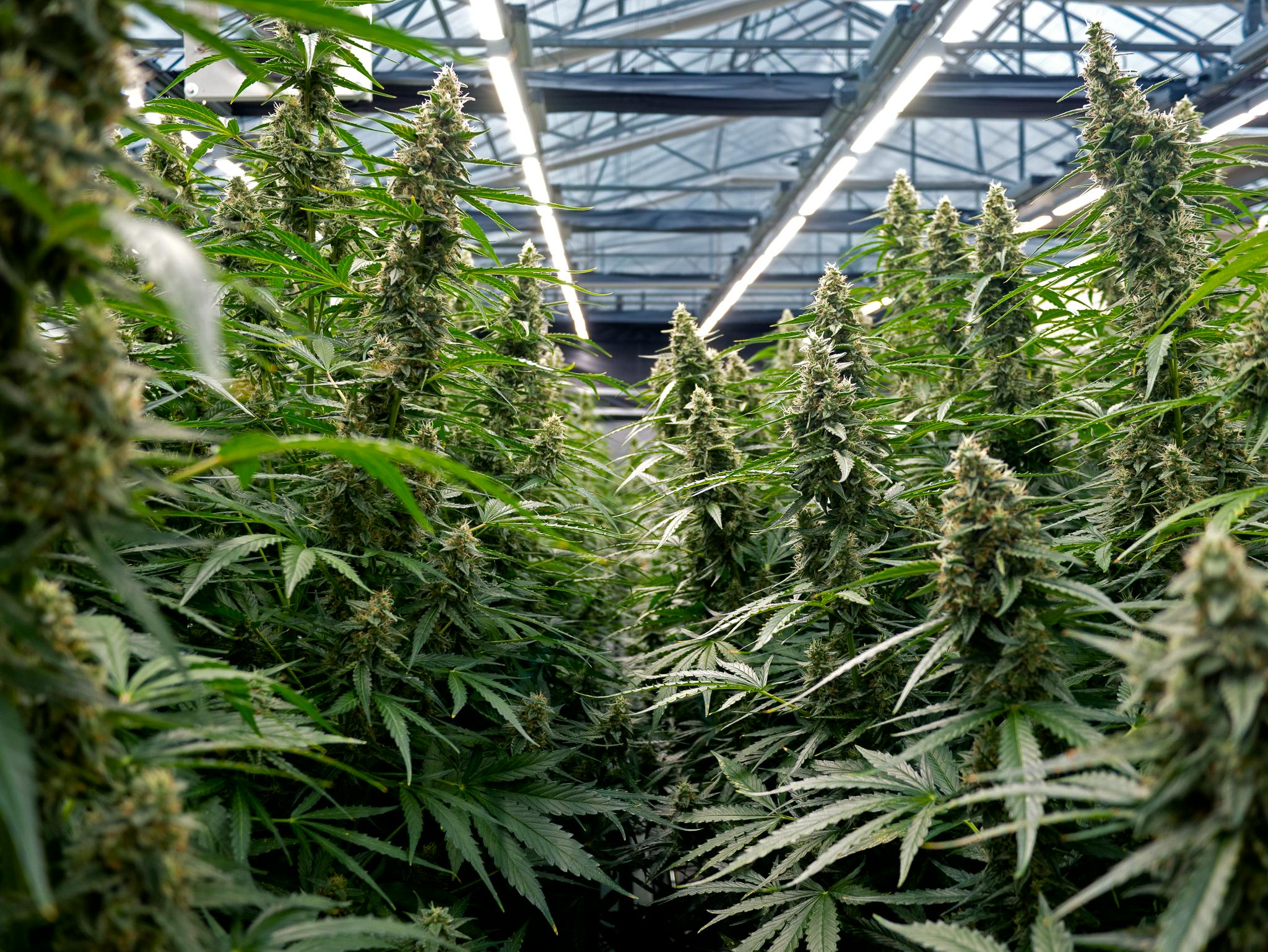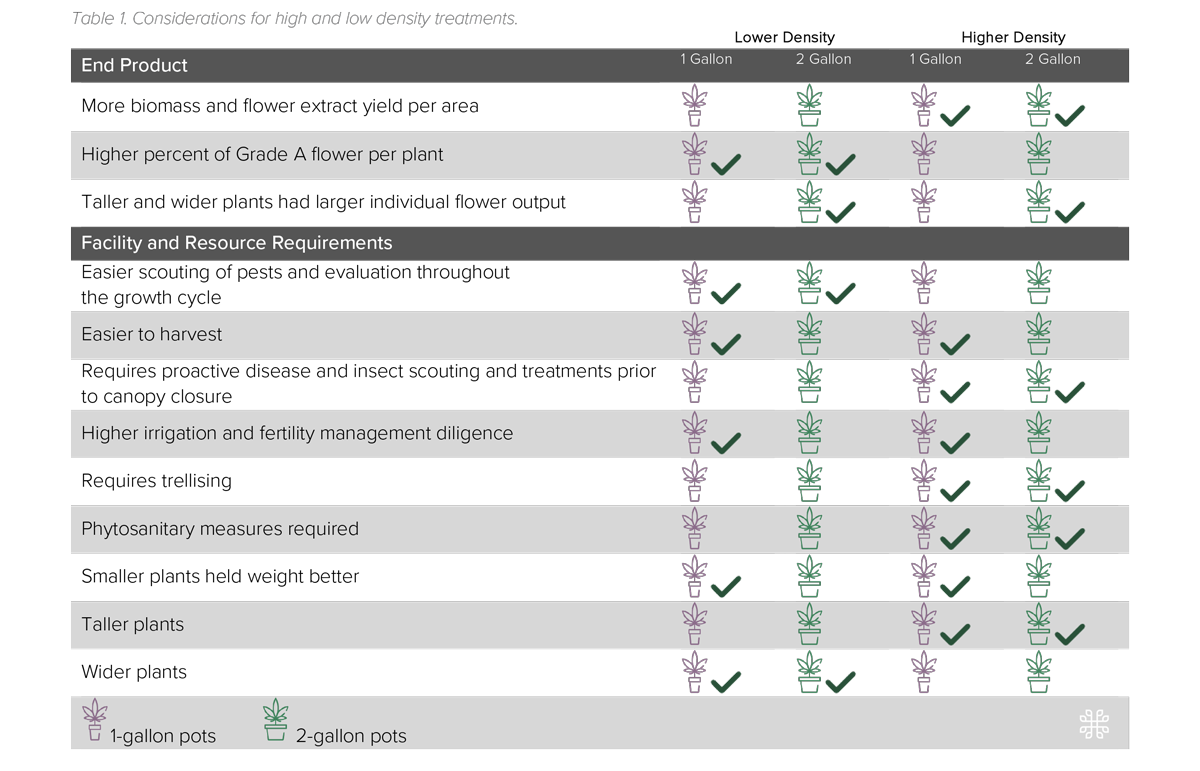The plant density conundrum
In an age of rapid development and change, cannabis and hemp growers face an ever-evolving landscape of best practices, decisions, and new research to consider when it comes to optimizing their grow operations. Before the first seed has germinated, commercial cannabis and hemp operators must develop a strategy for the planting density at which their crops will be grown.
It may seem as though this decision would be one of the easier tasks for cannabis growers, but that is far from reality. Traditional practices typically opt for larger plants with the belief that larger plants produce higher yields, and that lower densities allow those plants to grow larger. But recent findings by Phylos and their dedicated growing partner, Progressive Plant Research (PPR) suggests that this may not always be the case.
Download the full density trial report for free.

Hear from our breeding, genetics, and cultivation experts as they walk you through the study. Watch the Video
Putting data into the hands of growers
Researchers at Phylos and Progressive Plant Research recognized the impact that something as seemingly simple as planting density can have on a grower's yield and efficiency. Hypothesizing that optimization of density treatments could add to an operation’s profitability while potentially increasing sustainability, it was evident that a formal study was warranted.
Using two varieties of Phylos’ recently introduced day-neutral varieties, researchers developed a thorough experiment that followed the growth of Lime Glow and Electric Daydream. The purpose of the study was to establish the effect of plant density treatments on plant height, biomass yield, harvest index, cannabinoid and terpene composition, extraction yield, and ultimately profitability for growers.
The study was designed to observe five different density treatments in two different pot sizes (one and two gallons) throughout the entire greenhouse grow cycle. With a sample size of over 1,000 plants and the collection of more than 9,200 data points for evaluation, researchers at Phylos and PPR found themselves armed with valuable information needed to settle the age-old plant density conundrum — or at least better understand it.
Ultimately, data like that gathered from Phylos’ density trial gives cannabis and hemp growers the information needed to maximize their crop’s yield, efficiency, and sustainability. “The bottom line is we want our customers to succeed,” says Jared Reynbery, head plant breeder at Phylos, “we want to challenge assumptions that we make for our production systems. We want to optimize our production systems to develop the highest yielding varieties we can.”
Phylos’ density trial — The results
With over 9,200 data points collected, scientists at Phylos and PPR were able to identify several trends that could prove to be valuable in the hands of cannabis and hemp growers. Download the complete density trial report for free.
- More biomass per area (not per plant) came from Phylos varieties grown at the higher density
- Lower density treatments produced a higher percentage of Grade A flower
- Plants in two-gallon pots produced taller, wider plants with larger individual flowers
- Flower extract yield per unit area and flower biomass per unit area were highest in samples utilizing two-gallon pots with 0.5 sf/plant spacing — one-gallon pots with 0.29 sf/plant were a close second
- Regardless of the density treatment, plants grown at bench edges produced more biomass
Which traits did not see significant effects from the density treatments?
- Total THC (%)
- Minor cannabinoids (%)
- Total terpenes (%) – with a slight effect in one of the two varieties
- Flower harvest index (the ratio of flower to the rest of the plant)

The variables of plant density
Harvest yield per unit area may be the primary topic when strategizing your plant density treatment, but it is far from the only variable that should be considered. A grower's decision to optimize their plant density will not only affect harvest yield, but several other aspects of the cultivation process as well. These include, but aren’t limited to:
- Input costs: pots, soil, irrigation equipment, pest control, and fertility inputs
- Labor costs: people and resources required for harvest, scouting, and IPM
- Management considerations: pest, pathogen, and evaluation scouting; irrigation and fertility management; and managing canopy closure with trellising, training, or defoliation

The value of data
Studies like these are vital to the continued growth and understanding of best practices and sustainability within the rapidly expanding cannabis and hemp industry. In essence, this data creates a sense of dialogue between a grower and their crops. “No cannabis grow is hands-off,” explains Progressive Plant Research grower, Robert Tichinel. “The crop is going to tell you what it wants.” By having these “conversations” with your plants, you will not only better understand the needs of your crops, but you’ll position your cultivation practices to promote a profitable and sustainable future.
The complete density trial report is available for free. Download the report. For more information on how you can incorporate their groundbreaking day-neutral genetics into your operation or to discuss the density trial, please contact Phylos.